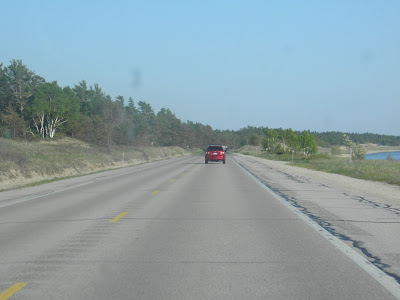In contrast, the Rockies, the Sierras of California and Mexico, the transverse and peninsular ranges of Southern California, the Brooks, and the Cascades, our tallest mountain ranges, all have bases that start from much higher ground for the most part. There are exceptions, of course, and three of the 10 most prominent peaks of the world are on our continent. In no way, however, do our native ranges look less dramatic.
Those peaks are anywhere from 12,000 to 14,000 feet above sea level, and while the bases might sit at 7,000 feet or so, they are still mountains. So what makes a mountain, exactly? Most people think about a pointed mass of gray rock with a snow cap at the top. The scientific community seems to have tons of differing opinions, with some communities stating that a mountain needs to have at least 4,000 feet of rise to it, and other saying a mountain requires at least 8,000 feet of elevation, which would eliminate the Appalachians and even much of the mountains of western Texas as candidates. And come on, take a look at the Shenandoah mountains and tell me they do not fit the bill!
Some people I know call these hills. Those are some pretty impressive 3,500 foot hills. I don't know about you, but when the temperature at the base is 90 degrees, and up near the top it is 76, I would qualify this as more than just a hill. At the base there are Southern Magnolias and Tupelos planted to line city streets. At the top you have red spruces, white pines, and hemlocks. During the winter months the upper half of the range will be covered in snow while the valleys and Piedmont will be sitting in their lovely mud and mid-40s. In some places, things can even get a bit rocky, and the tops will be open meadows or rocky balds. I'm sorry, but these are more than just hills.
So what is a mountain? I would say that a mountain is a mass of the planet that protrudes from the ground significantly enough to have different vegetation and temperatures at its top than what would be found at the bottom. A hill would be something much lower, and without much relief to it. In my post on the Great Plains, you can find pictures of the Flint Hills in Kansas, which provide good examples of what I would call hills. I could go on with a list, but I suppose I would do better to make a map of a familiar region with what consists of mountains and hills.
The mountain areas are teal, the hills are that yellowish-green. Perhaps I am too generous in calling some things "mountain". In each of those areas, however, they have sufficient vertical relief and road grades as high as 16% in places. Most of the Appalachian region does not require explanation (ignore the bottom part of the map, as well as the top of Quebec, I just forgot to scroll down there while painting), though some of the other regions might. In Quebec along the Ottawa river are the Laurentian mountains, which share characteristics similar to the mountains to their south, the Almaguins and Algonquin highlands. These are substantially rainier and rockier than the surrounding areas, so much so that they actually cast a slight rain shadow to areas east of them. These regions are the only place in Ontario that one can find certain species of trees and mushrooms. To the west, still in Ontario, are areas that have not been given any particular range name, but actually are part of the northern continental divide, separating waters that drain north to the Arctic and south and east to the Atlantic.
Over in Michigan, in the lower peninsula, are areas of relief one would not expect to find in an otherwise pancake flat state. Towards Gaylord the area almost passes for Appalachian. This is along M-72, about seven miles west of Kalkaska, MI.
Closer to Lake Michigan and to the south, the area rounds out a bit more and becomes hilly, an excellent contrast between "mountain" and "hill" according to my definition. This is again along M-72, descending down to Grand Traverse Bay, on the Leelanau peninsula.
Maybe only I can tell the difference. Anyway, near the Wisconsin/Michigan border are the Porcupine Mountains, the one place in Michigan lucky enough to be blessed by the Canadian Shield and its wonderful granite. Again, this area is not extremely tall, and only bears around 1,200 feet of relief, but the effect on the climate and vegetation is noticeable. The mountains can see daytime highs in the forties as late as June and as early as September.
How about those yellowish areas? That big north-eastern pointing spear in Michigan and Indiana is called the Jackson Lobe, some of which is also referred to as the Irish Hills. It is largely a glacial moraine left over from the last ice age, consists of sands and till, and is one of the last strongholds of eastern oak savanna prairies still left in the area. Over in southern Ontario, the hills are part of the rump of the Niagara Escarpment and the Oak Ridges Moraine, one of the largest protected greenbelts in the world. This was formerly the dividing boundary between the lands of the Huron and Iroquois peoples. Of course, they only made it that way because the muskrat/beaver border wars had already marked this border centuries before. The beavers won, but the muskrats ended up building more strip malls and outpaced them economically. The beavers eventually lost their colony of Barrie, which the Muskrats would reorganize into their northernmost bedroom community.
Aquatic rodent territorial conflicts aside, the mountains and hills of this greater area have long served as cultural and economic boundaries between different regions. Furthermore, even the slightest rise in elevation and transition into rockier areas causes big shifts in the local vegetation and animal life. This can be seen powerfully heading north on I-75 past West Branch, MI, or on Ontario 11 once one passes over the Severn river. More subtle changes can be seen heading into the Appalachians on I-80 in Ohio eastbound from about the Cayuga river onward. You can probably find changes anywhere on that map above if you look close enough. Go see for yourself, and bring plenty of rodent spray.































































